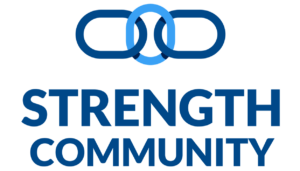How to Prepare for a Great Training Session – The Training Program
This is a multi-series article, and in every post, I’ll address a different point on how to prepare for a great training session.
Winston Churchill is credited with the expression “who fails to plan is planning to fail”, and even though it might sound very simple, it’s a very important and deep statement.
Applied to strength training and to the subject of the article, I have to say that I have never seen an athlete that stands on podium of World Championships or Olympic Games, that simply goes to the gym to do how he/she feels like. There is always a plan and there is always a structure, that leads to that goal of winning a medal.
If you are thinking, “who cares, I’m not going to compete with anyone” you are actually setting up yourself to failure, because the most important competition is with yourself, and you should be improving every training session, and without proper planning, that simply that is not going to happen.
In this case, the planning is referred to the writing of the training program. If you want to improve your strength levels, a Relative Strength training program will be well suited, or if you want to gain muscle mass, a Hypertrophy type of workout will do the trick or if you want to lose fat, a German Body Comp style program will bring you to the desired effect.
Simply going to the gym to see what stations are available so you can put together a program in your head, is not going to take you anywhere, as it doesn’t bring the structure your body needs in order to improve and get better, no matter what the goal is.
Keep in mind that the planning of the program not only refers to the one you are executing or are about to execute. It is also about reaching your mid and long-term goals. For example, you might say “in 3 moths I’ll be 6% body fat” or “in 6 months my deadlift will be 2.5X bodyweight” or “in one year my arms will be 50 cm or 20 inches”. Under any circumstance, there must be a proper planning to reach that goal, and that is the basis for periodization. You set your goals, and then you go backwards in time, setting a specific goal for each and every one of the training phases, that is conductive to the end goal. So, for the case of 6% body fat, probably doing a training phase of singles on the leg extension machine won’t be appropriate to reach that body fat percentage. On the other hand, to improve the deadlift, including a phase where you do Deadlift on Podium with a Snatch Grip in a slow tempo, might be good for the goal. For the case of the arms, including Chin-Ups and Dips in some of your phases will set the right path towards that goal.
As important as writing the program is keeping a training log, where you write down the weights you used, the number of sets and reps performed, and some notes related to the program. Even if you have a very good memory, and you are extraordinarily good in math, remembering all the aforementioned information from your previous session, and what type of improvement it will represent on the session you are about to perform, and how that will impact the goal of the whole program you are doing, is only left for a very few beautiful minds in this world. Also, let’s say that on your first session you had to use the only EZ Bar brand XXX, and you know that the weight of the other EZ Bars is not the same. If you didn’t make a note on your program about the bar used, the chances that you use the wrong bar, and therefore the wrong weight, are relatively high, and that will affect the desired outcome of your training session.
My go to tool for every session, whether it is my training or clients at my gym, is Strength & Metabolic Software. It allows me to save and easy access all the numbers that were performed during the workouts and check the percentage of improvement as well as drop off index, amongst others. Those numbers are particularly important when you are preparing an athlete for an event.
What about travelling?
If I have to spend one night at the airport hotel, the first thing I do after arriving is checking the gym or fitness center. That allows me to properly plan my training for the next day. Am I planning for just one day? Yes, I am. Will it make a difference on the goal for the workout being only for one day? Of course, it will. Let’s say that I have to train shoulders, and the maximum weight of the dumbbells is not good enough for a shoulder press workout. In that case I’ll plan my training around lateral raises, bent-over lateral raises, probably front raises, external rotators and trap3, on the high reps side of the spectrum. If all you have available is a park with monkey bars, a Chin-Ups and Dips routine will do a fantastic job.
Preparing the training program also allows you to define which supplements should be taken pre-workout. This subject will be address in the upcoming parts of this article.
Final words:
If you fail to plan you are planning to fail, and if you don’t measure your progress, it means it doesn’t exist. To succeed at your training and get the most out of it, make sure the phase you are executing is conductive to your training goal, plan the workout and measure the results.

